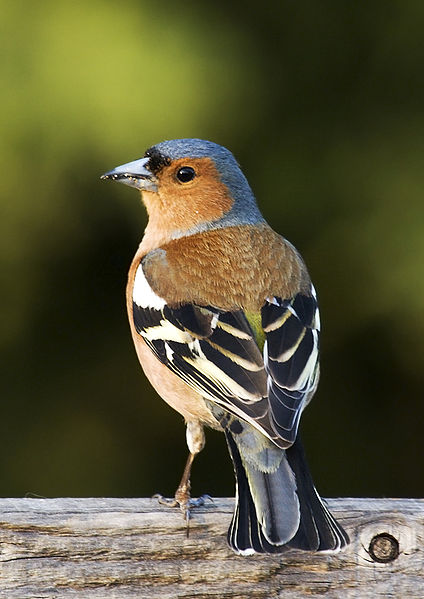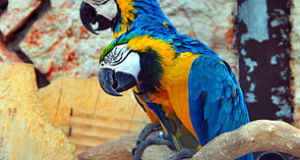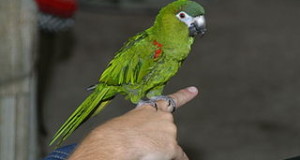 Please see Part 1 of this article for a discussion of the importance of offering your finches more than a simple “seed-only” diet. Today I’d like to suggest some foods that will help to keep your birds in good health and brilliant color, and which may encourage breeding.
Please see Part 1 of this article for a discussion of the importance of offering your finches more than a simple “seed-only” diet. Today I’d like to suggest some foods that will help to keep your birds in good health and brilliant color, and which may encourage breeding.
Live Insects and other Invertebrates
Insects and other invertebrates are essential for most finches, and critical during the breeding season. I’ve always maintained insect traps, such as the Zoo Med Bug Napper, to help meet the needs of my finches.
Try collecting small grasshoppers, crickets, sow bugs, beetles, flies, termites, grubs and moths. Please see my articles on Collecting Feeder Insects to learn more about increasing dietary variety. Consider raising mealworms as well, so that you’ll always have a supply of nutritious pupae and newly-molted grubs on hand.
Other live insects that can be purchased or reared include waxworms, roaches, silkworms, crickets, sowbugs and butterworms. House flies and, for tiny finch species, fruit flies, are a wonderful food source for both adults and nestlings. Cultures of flightless varieties of each are available through internet dealers.
Canned Insects and other Protein Sources
Canned Invertebrates marketed for use with captive reptiles are a convenient means of increasing the nutritional content of finch diets.
Freeze-dried Shrimps, an old-time bird keepers’ favorite, are accepted by many finches.
A bit of Softbill Select, Egg Food and/or hard boiled egg (grind with shell if possible) will provide important protein.
Fruits, Vegetables and Sprouts
Seasonal greens and fruits should be tried; freeze-dried fruits are an excellent means of increasing dietary variety.
Consider also growing or collecting native plants and sprouting seeds at home (please see articles below for detailed information).
Increasing Seed Variety
Millet, oats and canary-grass seed forms the basis of most commercial finch mixes, but most finches, especially tropical species, eat a far greater range of seeds in the wild.
Look for mixes that also contain niger, maw, aniseed and others, along with fat-rich varieties such as pine nuts, rape seed, teasel and safflower (you can add these separately as well). Please see our extensive line of finch foods for some ideas.
Treat mixes with less-common seeds, and foods that make allow for natural foraging opportunities (such as millet sprays) are an important part of finch husbandry. Please check here to see some examples, and feel free to write in for other suggestions.
Further Reading
Interesting Avicultural Journal article on the role of lesser-known seeds in finch diets.
Fringilla coelebs chaffinch image referenced from wikipedia and originally posted by MichaelMaggs and Arad
 That Bird Blog – Bird Care and History for Pet Birds
That Bird Blog – Bird Care and History for Pet Birds



